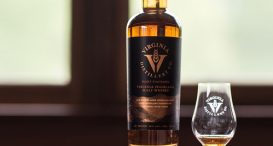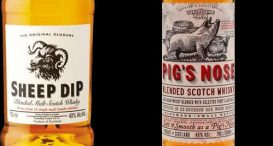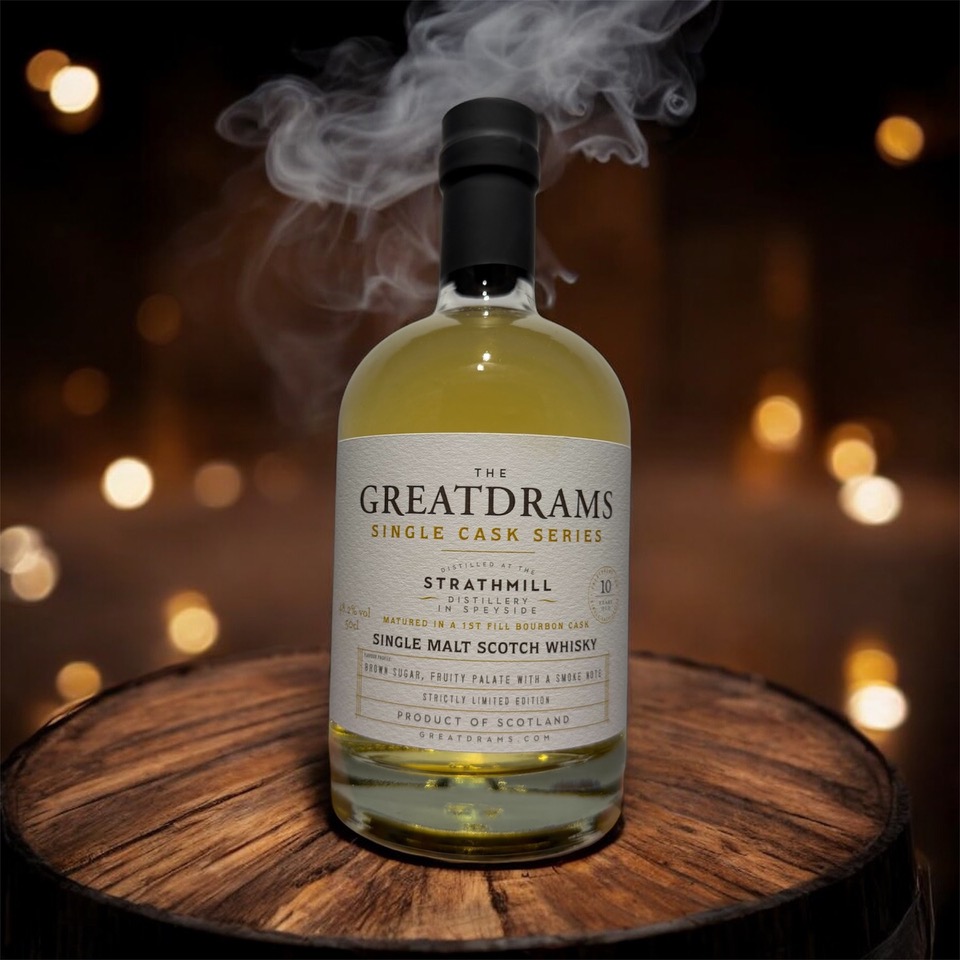Family Affair, taking a look at the families behind the Glenfiddich and Glenfarclas distilleries
let’s begin
Whisky brands often like to keep it in the family and with Glenfiddich and Glenfarclas, it’s proven to be a good idea.
Originally published in the print and web version of Whisky Magazine
“Working for the family is a privilege, not a right. I earned my way in through hard work, and I feel very fortunate to be working in such a fantastic, dynamic and fun industry. I think sometimes we forget just how special it is. It’s passion, commitment, dedication – from family members and old hands alike. This spirit and shared pride is rare and it is certainly translated in the quality of the whisky we produce,” says Kirsten Grant Meikle, US Commercial Strategy Director, William Grant & Sons
Many Whisky brands started as a family endeavour and it was not uncommon for distilleries to start as family businesses, a lot of distilleries actually started as farms or local grocers who expanded into distilling and then passed the businesses down from generation to generation. Over time many of these were sold off or changed hands enough times to end up as part of a bigger whisky company, but with Glenfiddich and Glenfarclas, things have ended up a little differently.
The Grants & Glenfiddich
The Glenfiddich Distillery was built by the legendary William Grant and his children in 1887, and it has remained in the Grant family hands ever since. The Grants were a pretty big family, which consisted of seven sons and two daughters, so there were plenty of hands on deck to get the distillery built through a harsh winter in time for the first spirit to run from the stills on Christmas Day.
The brand, along with the Grant’s blended Scotch whisky brand and products grew and grew through ingenious endeavour and innovation, and in 1957 the company’s reins was passed to William Grant’s great-grandson, Charles Gordon who brought in some new changes that brought the distillery back to more traditional processing, such as having a cooperage and coppersmiths on site. His innovation was followed by Sandy Grant Gordon, who championed Single Malts, and made Glenfiddich one of the first brands to do so.
Explaining her family history, Meikle exudes pride as she summarises that “with our founder, my great great-grandfather William Grant. The courage he had to follow his dream and create a new business from scratch at the age of 46. He literally built the distillery by hand, brick by brick. His brave and pioneering spirit has been passed down through generations of my family. We have always been forward thinking and that has certainly spurred the business on. As an example, despite flat sales during Prohibition, my ancestor Grant Gordon persuaded the company to actually increase whisky production rather than reduce it. This stood us in great stead and has meant we were ready to meet a global surge in demand in the early 1930s. My uncles Charles and Sandy were the embodiment of pioneering spirit. The single malt whisky category was essentially established by Sandy Grant Gordon and in 1963 we actively marketed Glenfiddich whisky outside of Scotland, something no other distiller had ever done before”.
Glenfiddich has been one of those brands that has always been synonymous with innovation including the first distillery visitor centre, taking a new perspective on bottle design with the pioneering ’tround’ bottle shape introduced for both the Glenfiddich and Grant’s ranges (and some very old Balvenie releases if you’re lucky to find them) and the use of a Solera ageing system for their 15 Year Old Single Malt.
Meikle states that today that ‘pioneering spirit’ still remains and that “ideas are valued and innovation is encouraged. It is our agility and independent mindset that ultimately leads to more interesting and innovative projects, and on that basis we do things differently. We take a long term view and in a race, a family run business bets on the tortoise, not the hare, which is why we’re always looking to the future with an unrivalled collection of whisky stock”.
Fiercely independent, the company thrives on ’the family’ being involved, making decisions and not answering to shareholders as they do things very differently to their competitors who are at the mercy of external personal and institutional investors and all the reporting of why certain decisions have been made and enforced timelines to meet share targets, revenue targets and cuts where appropriate.
“Keeping our business independent is critical to us as a family, and is always front of mind. I am fifth generation, and sixth generation family members are now crafting their roles and coming fully on board. It is very important to us to ensure the next generation are wholly involved in the family business. Essentially we see ourselves as custodians of the brand for the next generation, not just the next generation of the Grant family, but also the next generation of single malt enthusiasts as they discover our fantastic single malt for themselves”.
Meikle goes on to say that “the decisions we take as a family might not always make financial sense to another group of shareholders, but we feel they’re truly vital to the integrity of the whisky we make. As an example, it costs us more to maintain an on-site cooperage, and we are one of the last distilleries to do this. But we do it because we understand how important the quality of the cask is to the whisky we produce. Being family run is core to the way we do things and that makes all the difference to how our whisky tastes”.
The Grants & Glenfarclas
“Being a family owned company certainly has its advantages; speed and being able to adapt at a moment’s notice. Having that one person who can make immediate decisions is certainly a massive benefit. Knowing family companies is also incredibly important, all our distributors around the world are also family-owned, as we know the basis of how each of our companies work and also, much the same as ourselves, can get an answer much quicker,” George Grant.
While they might share a surname, lets be clear that the Grants of Glenfarclas and the Grants of Glenfiddich are not related. Glenfarclas Distillery was bought by John Grant for £512 in 1865, the equivalent of £30,274.15 in today’s money, which, according to the National Archives, would have equated to the wages of roughly 2560 days work for a skilled tradesman, alongside Recherlich Farm. He was a well known cattle farmer in the area and already owned a farm at Glenlivet. He passed the distillery on to his son George in 1889, but unfortunately George passed away pretty soon after. It was then passed on to George’s children, conveniently named John and George. Their history has quite a few Johns and Georges, the Grant family are very into passing on distilleries and names. So George (the second one) took the distillery on alongside his brother John and together they formed the Glenfarclas-Glenlivet Distilling Company.
They entered into a partnership with the Pattisons of Leith, and as any discerning Whisky nerd will know, the Pattisons were pretty ill-faed in their Whisky selling. The Pattisons had a lot of marketing power but very little else and eventually they caused the whole Whisky industry to crash in Scotland, pulling down a lot of good distilleries with them.
The Grant’s however, were enterprising, and through hard work and determination, they made Glenfarclas into a very successful brand. George went on to have two sons, who were called, to nobody’s surprise, John and George. George (the third one) went on to take over the distillery and saw it through some pretty difficult times, including prohibition and the Second World War. He passed it on to John LS Grant, who then brought on George S Grant, and the two remain in charge to this day.
Grant muses on the changes his family has seen; “there have been lots of ups and downs, for example, in the 1950s when they changed the law so you could mash and distil in the same day, in the 1970s with the introduction of visitor centres at distilleries, even factors like the advent of mains gas. The last two generations – my father and grandfather – have seen the most change overall.
Despite being family owned, the two companies do things very differently, from their approach to business to their family history, the approach is unique to each, but both businesses work perfectly for the respective families who own them.
“We still direct fire heat all the stills. Still mature nearly exclusively in Oloroso sherry casks”, says Grant, adding that “our difference is that we own all the whisky from the day we put it into the cask until the day it is sold, which is unusual. It’s a big plus point for us. At the end of the day, we want people to go buy a bottle, and then buy another one. We don’t want people to be worrying about whether they can afford to open the bottle on their shelf.
“Taking the 40 year old as an example, other brands are several thousands of pounds per bottle. This needs more of a significant reason to buy and to open a bottle. Ours is well below one thousand a bottle. People that do buy it, can hopefully buy it again and again before the cost adds up to that of most 40 year old whiskies,” he adds.
Glenfiddich and William Grant expanded massively, building and buying new distilleries and constantly pushing their brand further. The effort has paid off, and they are now one of the biggest selling Scotches around the world. While Grant & Sons has become a company with many other brands under its name, Glenfarclas is not owned by any other company, nor have they bought any other brands.
Glenfarclas, while also very popular, especially in Scotland, are not quite as big. It is understandable that they shunned future partnerships after the disaster of the Pattison crash and today are entirely independent, one of the few distilleries that are. “[Family ownership] is important – you can only sell something once, so why would you sell it? We’re doing a good job, exporting to 100 countries around the world and growing,” notes Grant, ““The fact that we are still family owned and are still independent. We are who we are, and a well-recognised and well-respected brand around the world, and respected by our peers within the industry as well the general public.”
But several things unite the two businesses too as while they may have different outlooks to how they approach marketing and expansion, both are very successful and both insist on keeping it in the family. For good reason too, since this means they are able to capture a more traditional feel for their brands. Scotch is often entwined with myth and legend, and having a family history to back up any brand gives an extra edge, especially in new markets and territories. It also means there is more of a legacy to uphold and something for future generations to look back on and use as a foundation for future endeavour. Both brands have found great success by relying on family, and with Scotch becoming increasingly popular, it’ll be interesting to see where they go next.












